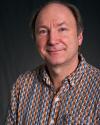|
Prof. Steve Sharpe (srsharpe@uw.edu) T Th 9:30-10:50 PAB: B143 Office hours: by appointment---please email |
|
(The picture above is of a Higgs decay to tau-antitau from the ATLAS detector. Courtesy of CERN. http://cds.cern.ch/record/1631395)
Welcome to PHYS 558 (Spring 2024). This is the second part of the High Energy Physics course, following on from PHYS 557. It takes a deeper dive into the standard model and theories of physics beyond, with an emphasis on phenomenology, i.e. measurable effects. It is aimed at graduate students doing research in experimental or theoretical particle and nuclear physics, although all are welcome. Prerequisites are PHYS 557 and PHYS 570 (Quantum Field Theory 1) or equivalent. In particular, I assume that students are familiar with Feynman rules and the Lagrangian of the standard model.
If you are interested in taking the class, but have not taken these prerequisites, please come and discuss your situation with me. It might work with appropriate self study.
This is a graded class. The tentative plan is for ~3 homework sets and a final project. There will be no exams. For more information, including texts and grading scheme, see COURSE INFORMATION (PHYS 558) (which is also on the "Pages" link).
For useful links see LINKS, for some fun images see IMAGES, and for the latest (and some older) news see NEWS (some old and some new) Please email suggestions for images, links, or news items to add.
I will begin the course with ~2-3 weeks of discussion on
- Strongly interacting particles (hadrons) and their symmetries and decays
- Chiral symmetry and its predictions (brief mention of chiral perturbation theory)
- Using lattice QCD to make nonperturbative predictions for hadron properties (brief overview)
Subsequent topics will likely be drawn from the following list (which is ordered randomly), with choices based on student inputs. Additional suggestions are welcome!
- CP violation in K and B meson systems: theory and phenomenology
- MSW effect in neutrino mixing
- CP violation in neutrino mixing: theory and prospects for measurement
- Theoretical predictions for muonic g-2
- The strong CP problem and QCD axions
- Tensions between experimental results and the predictions of the standard model, and possible new physics explanations
- Searching for new physics in decays of nuclei (e.g. proton decay), and rare decays of kaons
- Classes of models of beyond-the-standard-model physics
I am aiming not to have much overlap with material taught in related classes, in particular PHYS 555 (Cosmology and Particle Astrophysics), taught by Prof. Loverde in W24, and PHYS 578 (Effective Field Theories in Nuclear and Particle Physics), taught by Prof. Cirigliano in W24.
Code of Conduct (excerpted from Physics Department Values and Code of Conduct)
``We each commit to doing our part to create an environment that:
-
-
- upholds the highest standard of scientific conduct;
- is collegial, considerate, inclusive, respectful; and
- is welcoming to individuals of diverse identities and characteristics, which include but are not limited to race, ethnicity, nationality, sexual orientation, gender identity, physical appearance, manner of speech, age, family background, religion, and marital, parental, veteran, or ability status."
-
As appropriate, please feel free to bring up issues with me, either in person or by email, or the department Chair.
The UW student code of conduct is here.
Religious Accommodations
Washington state law requires that UW develop a policy for accommodation of student absences or significant hardship due to reasons of faith or conscience, or for organized religious activities. The UW’s policy, including more information about how to request an accommodation, is available at Faculty Syllabus Guidelines and Resources. Accommodations must be requested within the first two weeks of this course using the Religious Accommodations request form (available here).
